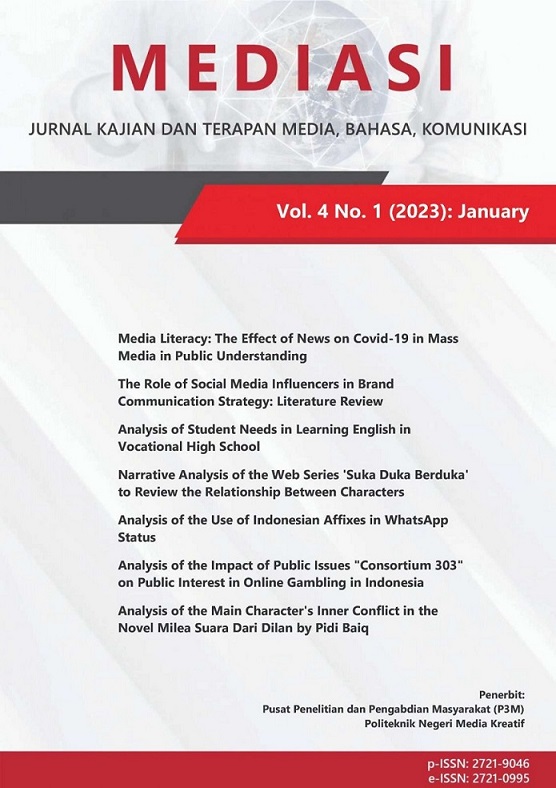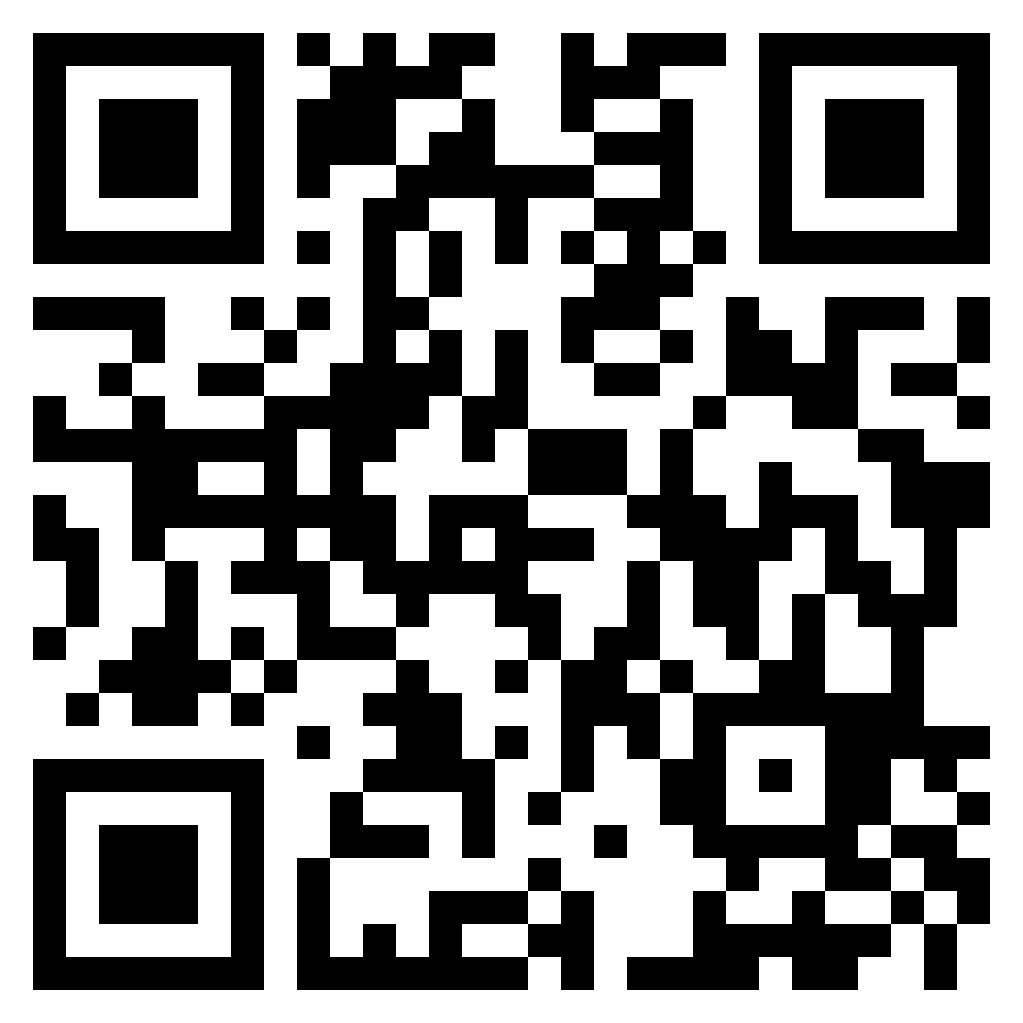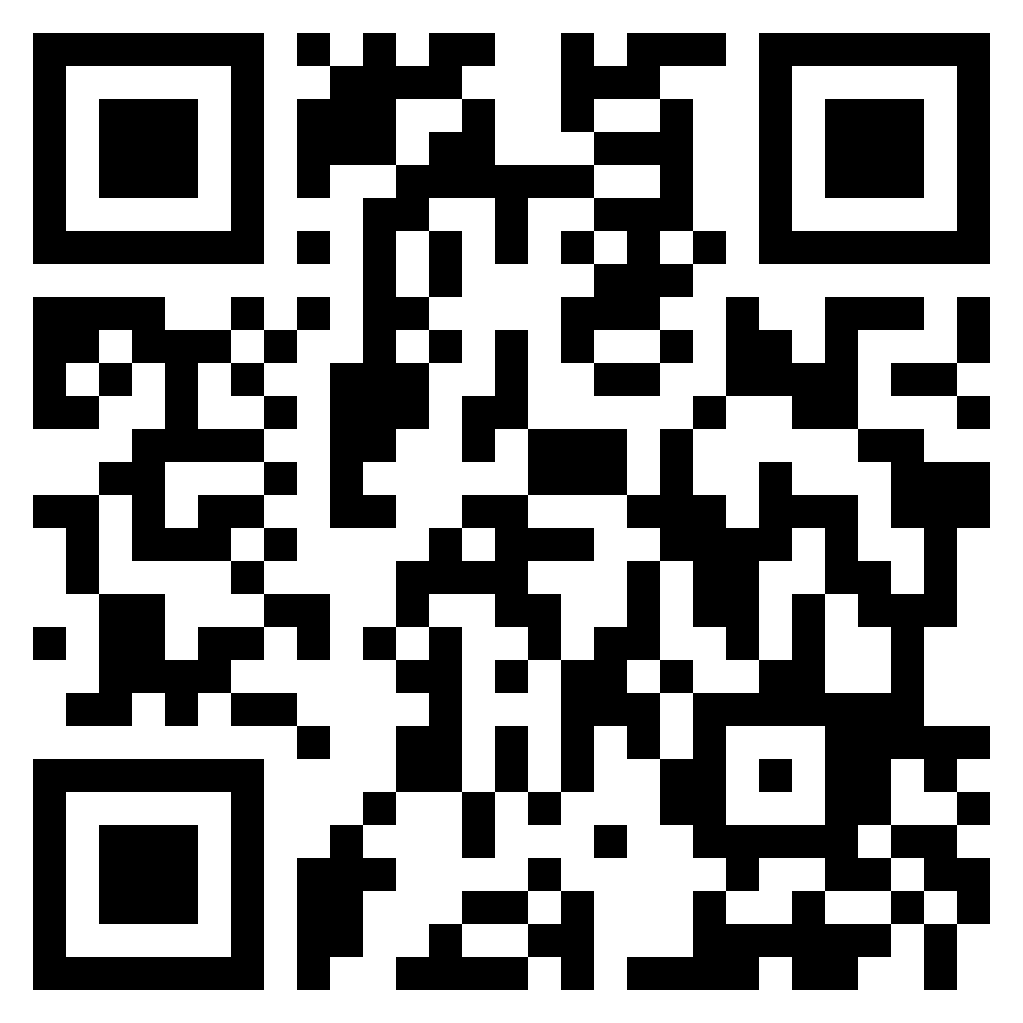Analysis of the Use of Indonesian Affixes in WhatsApp Status
DOI:
https://doi.org/10.46961/mediasi.v4i1.666Keywords:
Affixes Using, Indonesian Affixes, WhatsApp statuses.Abstract
This research aims to explain the form and meaning of affixes or affix terms in WhatsApp application status. This type of research is descriptive research by collecting data through the screenshot technique on the WhatsApp status that appears through the researcher's status column. The researcher analyzes the affixes contained therein using descriptive analysis techniques and classifies the affixes based on their type. According to the results of the research that has been done, it can be concluded that the form and meaning of Indonesian affixes in WhatsApp status are found, including; (a) prefixes include {meN-}, {ber-}, {di-}, {ter-}, {se-}; (b) the infix includes {-em-}; (c) suffixes include {-an}, {-i}, {-kan}, and {-nya}; (d) confixes include {ke-...-an}, {pen-...- an}, and {per-...an} ; (e) simulfix includes {re-...-kan}, {receive-....-i}, {me-...i-}, {me-...-kan}, and {di-. ..-i}. The results of this research are expected to provide a lot of information to the public regarding the use of affixes.
References
Bariyah, A.K. & Darmuki, A. (2021). Analisis Afiksasi pada Kolom Jati Diri di Surat Kabar Jawa Pos Edisi 6 Januari–4 Februari 2021 dan Hubungannya dengan Pembelajaran Bahasa Indonesia di SMA. Jurnal Pendidikan Edutama, 1–6.
Diari, K. P. Y. (2018). Proses Morfologis Istilah-Istilah dalam Tajen. Widyacarya, 2(2), 85–90.
Fauzan, M. R. (2017). Analisis Penggunaan Afiks Bahasa Indonesia Dalam Status Blackberry Messenger Mahasiswa Kelas C Angkatan 2012 Program Studi Pendidikan Bahasa Indonesia. Jurnal Bahasa dan Sastra, 2(2), 61–76. http://jurnal.untad.ac.id/jurnal/index.php/BDS/article/view/12291
Hardyanti, S., Wagiran, & Utami, S. P. T. (2017). Perbandingan Afiks Pembentuk Verba Bahasa Indonesia dan Bahasa Jawa. Jurnal Sastra Indonesia, 6(1), 34–40.
Herawati, R., Juansah, D. E., & Tisnasari, S. (2019). Analisis Afiksasi Dalam Kata-Kata Mutiara pada Caption di Media Sosial Instagram dan Implikasinya terhadap Pembelajaran Bahasa Indonesia di SMP. Membaca Bahasa dan Sastra Indonesia, 4(1), 45–50.
Hermaiyah, A., Harahap, R., & Al-washliyah, U. M. N. (2022). Analisis Bentuk dan Makna Kata Berafiks Varian Awalan Me- pada Pesan Singkat Whatsapp. 2, 43–51.
Nyoman. (2018). Metode Penelitian Bahasa: Pendekatan Struktural. Metode Penelitian Bahasa, 14, 1–123.
Permatasari, N. P. (2013). Abrebiasi, Afiksasi, dan Reduplikasi Ragam Bahasa Remaja dalam Media Sosial Facebook. Suluk Indo, 2(3), 1–12.
Ratnasari, A. O. (2017). Pemetaan Afiksasi Buku Juara Jurnal Bahasa Indonesia Mahasiswa BIPA 2016/2017. Jurnal Bahasa Indonesia Mahasiswa BIPA 2016/2017, 1–9.
Retnosari, I. E. (2017). Penguasaan Afiksasi pada Makalah Mahasiswa Malaysia UIN Sunan Ampel Surabaya. Edu-Kata, 5(1), 23–30. https://doi.org/10.52166/kata.v4i1.1001
Sulastri, A., Yunus N. H., & Riniawati, R. (2020). Analisis Kesalahan Penggunaan Afiks dalam Makalah Mahasiswa Semester 1 Prodi Pendidikan Bahasa Indonesia Universitas Al Asyariah Mandar. Pepatudzu: Media Pendidikan dan Sosial Kemasyarakatan, 16(1), 51. https://doi.org/10.35329/fkip.v16i1.661
Downloads
Published
How to Cite
Issue
Section
Citation Check
License
You are free to:
- Share — copy and redistribute the material in any medium or format
- Adapt — remix, transform, and build upon the material
- The licensor cannot revoke these freedoms as long as you follow the license terms.
Under the following terms: Attribution; NonCommercial; and no additional restrictions.















